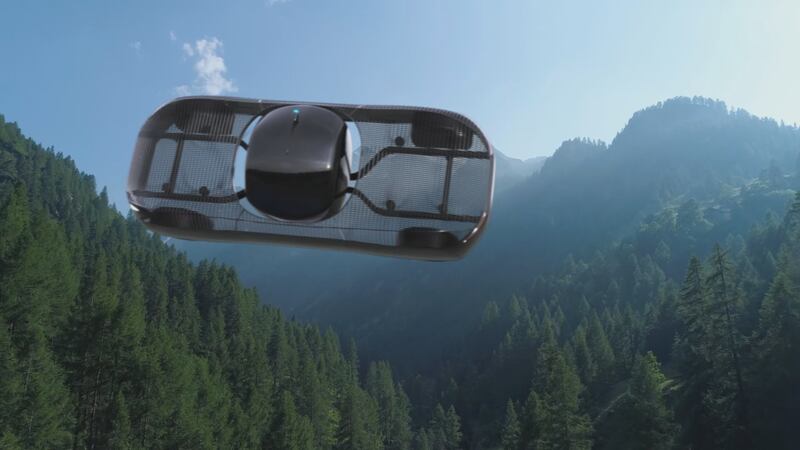By 2025, flying cars may no longer be exclusive to the magical world of “Harry Potter” or time-traveling DeLoreans operated by nutty scientists — the first flying car has been granted permission to take flight in the U.S.
Last week, California-based startup Alef announced that its fully electric flying car, “Model A,” was granted legal permission by the Federal Aviation Administration to begin test driving the vehicle on roads and in the sky, per CNN.
Alef is the first company to receive a Special Airworthiness Certification from the FAA, but the certificate “limits the locations and purpose for which Alef is permitted to fly,” per Newsweek. It will need to meet safety standards from the National Highway Traffic Safety Administration before given full driving access.
“The historical significance of this cannot be overstated,” Jim Dukhovny, Alef’s CEO, told USA Today. “While there have been pioneers like Terrafugia, Paul Moller, and Henry Ford, this is the first time a vehicle, in the traditional sense (parks and drives like a car, functions like a car, looks like a car), has received permission to fly. It’s also important that Alef is the first electric car which received permission to fly. And, last but not least, the ability for vertical takeoff is central to most people’s conception of a ‘flying car.’”
How will Alef’s flying car work?
For $300,000, you’ll receive a fully-electric vehicle capable of flying and driving on roads with vertical takeoff and landing capabilities. It will apparently carry one or two passengers and have a road-range of 200 miles and a flying range of 110 miles, per CNN. For comparison, the Tesla “Model S” boasts a 405-mile driving range.
Despite Model A’s impressive list of innovative qualities, it will be lacking in speed. Model A is considered a low speed vehicle and won’t go faster than 25 mph on paved surfaces. To reach a destination faster, drivers should use the vehicle’s flying capabilities, according to Alef, per USA Today.
“There is a reason we don’t have flying cars today; it is because it is impossible,” Dukhovny teased audiences during an October presentation from Alef, per Newsweek.
“Why? The laws of physics. In order to fly, you need an air pressure under the wing to be more than (the) air pressure over the wing. ... Hence, you need a large wing area.”
Dukhovny claims that Alef has done the “impossible,” adding, “but we did not break the laws of physics — we fooled them.”
To take flight, the vehicle rises vertically via eight rotating blades located beneath its permeable bodywork. After rising a few meters in the air, the vehicle rotates sideways while the passenger seat simultaneously rotates so the seat remains upright, reports Newsweek.
Creators were influenced by Marty McFly
In “Back to the Future,” in a fictional 2015, Marty McFly (Michael J. Fox) travels through time from 1985 to a futuristic world with hoverboards and flying cars. In reality, time travel and flying cars were not available in 2015.
But during a Science Fiction lecture from Dukhovny, he talked about how flying cars were possible in 2015. The creators of Alef compared the two events on their official site.
To bring the vision presented in “Back to the Future” to reality, the creators had to overcome several obstacles: “it has to be a real car (driving in driving lanes, parking in parking spaces), it has to have a vertical takeoff (otherwise it is not a real flying car), it has to be affordable for most people (not just the rich),” the Alef website says.
Pre-order your flying car now
The flying car is now available for preorder, according to the company’s website. It is estimated to cost $300,000.
To get in line for the opportunity to pre-order the vehicle, you are required to make a $150 down payment. If you want to get on the priority list, you will need to make a $1,500 payment.
The 100% electric vehicle is expected to land on the market in 2025.


